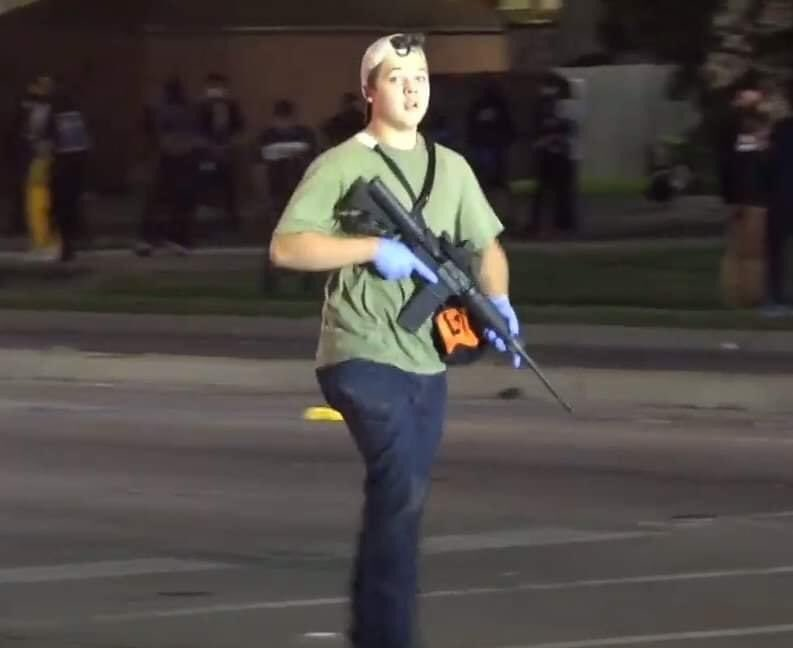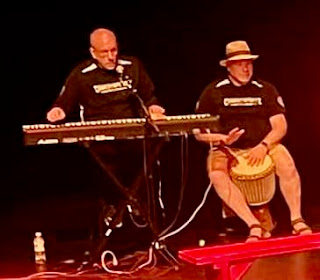Your Chance to Live!

I was born in 1961. That put me in diapers during the Cuban missile crisis, in grade school through most of the Vietnam War, and in junior high during the "Your Chance to Live" emergency preparedness campaign. This seemingly endless series of film strips and short films presented arresting stories of survival in a variety of natural disasters, as well as, with the help of stock footage and dramatizations, of how to survive a nuclear attack. These lessons were powerful, terrifying, and largely pointless for the geographic region in which I was living at the time: Idaho, a state rarely experiencing any weather-related disasters or earthquakes, and probably toward the bottom of likely American targets for a missile attack. Regardless, we all sat and watched in shocked silence as one force of nature or war after another destroyed homes and lives. We never had a "duck and cover" drill, but we all knew which buildings in town were certified fallout shelters.
And yet, the actual threat of nuclear war was receding all the time. The early 1970s were the era of détente, as Henry Kissinger made inroads in both China and the USSR. 1974 saw the first joint Russian-American space mission. Arms reduction talks made slow but steady progress throughout the next two decades, until the collapse of the Soviet Union took Mutual Assured Destruction off the table completely.
Still, I was haunted by those lessons, fear that was heightened in the early 1980s with films about the aftermath of nuclear attack that presented it far more believably than those government films ever had.
In the 1980s, I lived in two parts of the United States, Illinois and Texas, that had passing familiarity with extreme weather. A tornado touched down near Urbana-Champaign while I was attending graduate school there, but apparently it was in an empty field (there are plenty of those in central Illinois), so no damage was done. In 1987, my wife and I took a sort of late honeymoon tour of Texas and drove through a storm front that, a few hours earlier, had destroyed a town with a tornado. That was considerably more frightening, with the sky turning green and rain driving against the car so hard that we could only stop and hold each other until it passed. In 1993, the Spring Break Quake cracked the ceiling of our living room in Sherwood, Oregon, and another earthquake in 2001 had my third floor room at the Peace House rocking. That last event was the only one in which my disaster training paid off: I got in the doorway, and was able to tell my neighbor to do the same.
There were other safety films I watched in school that were not related to either nuclear or natural disaster. Two stand out: train safety and alcohol awareness.
Growing up in Idaho, unmarked rail crossings were a fact of life. All those crops and wood products had to be transported, and trains were constantly plying the high plateau where we lived. I think I was in third grade when we were shown the film about what could happen if we weren't careful around those crossings, and it haunted me for years. Like all effective fear mongering, it utilized dramatization. I remember two: kids playing hide-and-seek in a rail yard; and teenagers racing their car through a crossing, trying to beat the train. In the first scenario, a child is under a freight car when it shifts. He screams. His friends and some workers rush to pull him out. The next thing we see, he's on crutches, one pants leg empty, mournfully watching his friends play at recess. In the second, they don't, of course, make it, and there's a spectacular crash. We then see one of them in a coma in the hospital--but he was the lucky one. The next shot is of a tombstone.
The film about alcohol scared me away from drink for almost two decades. The most memorable scene was a forensic investigation of who caused a fatal car accident: the woman driver who'd had one martini, or the lush who'd downed a fifth of whiskey before getting behind the wheel. To answer this question, the pathologist sliced their brains like loaves of bread, showing how that of the light drinker was almost pristine, while the heavy drinker's was riddled with holes, dark and bloodshot. I'm not making this up. I can still see those brain slices in my mind's eye.
These fear campaigns worked. I am always nervous at rail crossings, never try to beat the gates, and I am always concerned (especially in our fair boozy city of Portland) about blood alcohol levels when I'm on the road.
Which is a long way of saying I've come around to agree with the National Rifle Association on one issue: All American children need to be taught gun safety.
Just to be clear, I don't, and never will, believe all Americans have to learn how to shoot. I will never own a gun, hunt with a gun, shoot at targets with a gun, defend myself with a gun. The damn things are dangerous, lethal, and the less of them in existence, the better. But the reality of our situation is that there are a hell of a lot of them out there, and just from the sheer volume of stories about children "accidentally" killing themselves or friends or family members with a gun they came across in their own homes or the homes of playmates, we have got to start teaching them to leave them where they find them, and better still, to tell an adult to put them away.
Slate magazine's crime writer, Justin Peters, has been blogging about juvenile shooting deaths on an almost-daily basis. They happen that often. He beats two drums: education and prosecution. If Americans are going to have such easy access to guns, then for God's sake let's teach them to lock them up, put trigger locks on them, never ever leave them out where children can find them, and if we're going to have them in our homes, teach our children to respect and avoid them if we forget to take the normal precautions; and since we can't guarantee our children won't come across them at a neighbor's house, teach them these same things even if we don't keep them in our own houses. The second part of it, the one that sounds harsh but seems more and more common sense, is to prosecute the thoughtless adults whose carelessness makes it possible for an unsupervised child to pick up a loaded weapon left lying out in the open and put a bullet through another child's skull. At the very least, it's manslaughter. It might even be murder.
But that's beside my point, which is safety. I have to admit that guns are present in a lot of American households, whether I like it or not, and this is not going to change anytime soon. Children are far more likely to encounter them, and in far more places, than they are a tornado, earthquake, hurricane, or nuclear bomb; and being inquisitive, curious, and naïve, not to mention exposed to a variety of media in which shooting is depicted as cool (and I have to admit I enjoy many of those shows and movies, too), unless the guns are locked in a safe, they will be found, no matter how well you think they've been hidden.
This is why I believe gun safety training should be a requirement for anyone purchasing a gun. It's at least as common sense a precaution as requiring written and driving tastes before licensing drivers. And yes, again, all our children need to be taught how deadly guns can be, and to leave them alone if they find one lying around.
As an educator, I know that attaching a strong emotion to a lesson burns it into long-term memory far better than simply lecturing about it. The more visceral the emotion, the more permanent the learning. I'll never forget the nausea I felt when those freight cars shifted and that kid screamed, or when the pathologist sliced up those brains.
Fear is a powerful learning tool. Fear of loaded guns will save lives. Fear of a child dying because of your carelessness may cause you to lock up your weapon, and that, too, will save lives.
And isn't saving lives the main argument for owning a gun in the first place?


Comments
Post a Comment